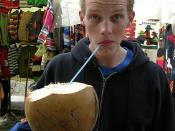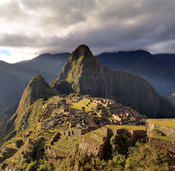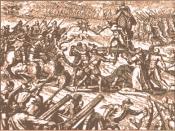Briefly, democracy is a matter of degree and quality. Confusion often arises in discussion about democracy. This stems from the different premises people have in mind when they use the term. In my opinion, most people fail to specify their underlying premises, and we often incorporate into our sense of democracy disparate factors that may or may not relate to it. To avoid such confusion, we must identify the key ideas central to democracy and clarify precisely how the term will be used. The best way to study democracy is to learn the other countries, so in this time I choose one of Latin American countries, Ecuador for well-understanding of the process of democracy.
Ecuador is graphically one of the world's most varied countries despite its small size, which at 283520 sq. km is about the size of either New Zealand or Nevada State. Ecuador staddles the equator on the Pacific coast of South America and is bordered by only two countries, Colombia to the north and Peru to the south and east.
The estimated population of Ecuador in 1991 was 10,800,00. This is approximately 10 times the number of Indian estimated to have been living in the area at the time of the Spanish conquest. The population density of about 38 people per sq. km is the highest of any South American nation.
Like other Latin American countries, the major religion is Roman Catholicism. Some of the older cities have splendid 16th and 17th-century Catholic churches. Although churches of other faiths can found, they form only a very small minority. The Indians, while outwardly Roman Catholic, tend to blend Catholicism with their traditional beliefs. In Ecuador, Spanish is the main language. Most Indians are bilingual, with Quechua being their preferred language and Spanish their second tongue.
Ecuador, that is...


